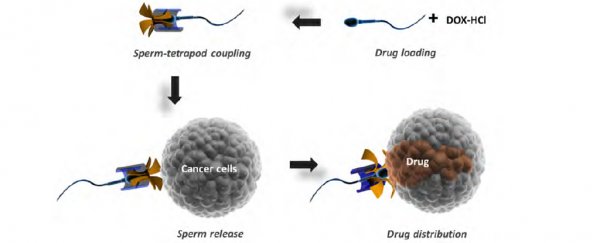A team in Germany has developed tiny robot suits that can help sperm become more mobile, solving one of the biggest causes of infertility in men. If the researchers can successfully replicate their lab results inside the human body, it could be a new option for couples struggling to conceive.
These 'spermbots' are miniature metal helixes just large enough to completely wrap around the tail of a single sperm and help it along its way towards the egg. The bots are powered with the assistance of a magnetic field controlled by the scientists, though all of the experiments undertaken so far have been with bull sperm in the confines of a petri dish. Once the sperm has reached its target and become embedded in the egg, the metal casing can reverse direction to detach itself.
While still at an early stage, the new spermbots could theoretically provide a more effective and less expensive alternative to artificial insemination and in vitro fertilisation (where the egg is removed from the body before being fertilised) for couples. The work of the group from the Institute for Integrative Nanosciences at IFW Dresden has now been published in the journal Nano Letters.
"Our results indicate that metal-coated polymer microhelices are suitable for this task due to potent, controllable, and non-harmful 3D motion behaviour," explains the report.
"Despite the fact that there still remain some challenges on the way to achieve successful fertilisation with artificially motorised sperms, we believe that the potential of this novel approach toward assisted reproduction can be already put into perspective with the present work."
New Scientist reports that the tiny bots are 50 microns long, 5-8 microns in diameter and made from iron and titanium nanoparticles (1,000 microns makes up a millimetre); eventually, they could find a broader range of uses. The University of Toronto's Eric Diller, who wasn't involved in the research, told the publication: "This type of hybrid approach could lead the way in making efficient robotic micro-systems,"
The next stages for the team are working out an improved method of controlling the direction of these spermbots, upgrading the micromotor construction that they're built on, and investigating any potential issues with the body's immune system. The video released by the American Chemical Society to accompany the report says this is "a promising start", but there's still a lot of work to be done.

